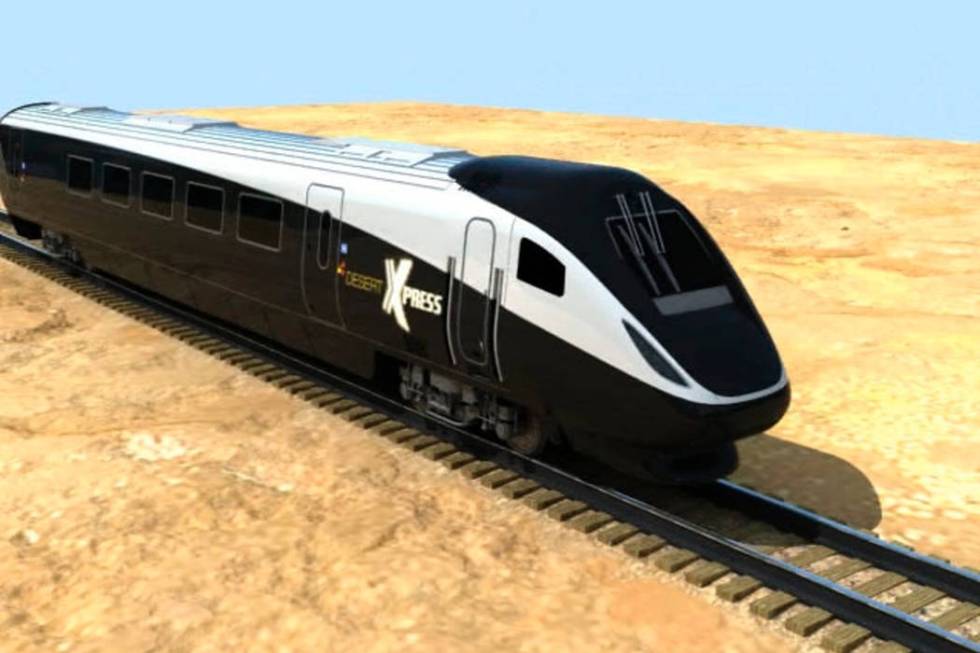EDITORIAL: The little engine that couldn’t

“Government programs, once launched, never disappear.” Ronald Reagan said. “Actually, a government bureau is the nearest thing to eternal life we’ll ever see on Earth.”
The 40th president’s words continue to ring true. Consider California’s bullet train.
On Thursday, the Trump administration pulled a $1 billion grant for the project and announced it would no longer force federal taxpayers to subsidize the boondoggle. California voters originally approved the rail line — which was supposed to link San Francisco and Los Angeles — in 2008 under false pretenses. Proponents, cloaked in the pious mantle of environmentalism, insisted the project would be green-friendly, self-sufficient, cost just $40 billion, be finished by 2028 and offer $55 one-way fares between SoCal and the Bay Area. These estimates — like virtually all projections underlying public transit dreams — were fabrications designed to juice support.
The Obama administration played along and funneled the state $6.5 billion in federal cash to prop up the rail line. But most con games eventually run their course. By 2012, the California High Speed Rail Authority had bumped the cost by 70 percent to $68 billion and said a one-way ticket would run $86. Six years later, estimates were running closer to $100 billion with a finish date of 2038, a decade behind schedule. The delays and overruns on the first leg of the project — a 119-mile stretch in central California — have been constant and predictable.
In terminating the federal grant, the Federal Railroad Administration noted numerous issues. Specifically, the authority overseeing construction “is chronically behind in project construction activities and has not been able to correct or mitigate its deficiencies.” In addition, the Los Angeles Times reports, the FRA’s letter “notes that the agency rejected every quarterly budget that the state authority submitted since late 2016” because of “deficiencies and errors” in the documents.
To make matters worse for California, U.S. Transportation Secretary Elaine Chao said the administration may look to claw back $2.5 billion in federal grants that were previously showered on the project.
In the real world — i.e. the private sector — a company that continued to pour billions into a colossal money pit with no end in sight would go belly up, its executives targeted by angry investors and perhaps brought up on charges. In the fantasy world of the public sector, however, where other people’s money is the currency of choice and costly empire building remains a marker of political accomplishment, no failure is too grand to prompt embarrassment.
Just months ago, California Gov. Gavin Newsom indicated the project would need to be scaled back because there was no indication the complete line would ever be finished. He later backtracked under pressure from progressives, and upon news that President Donald Trump had shut off the spigot, Gov. Newsom reacted predictably.
“The Trump administration’s action is illegal and a direct assault on California, our green infrastructure, and the thousands of Central Valley workers who are building this project,” the governor said in a statement, according to the Times. “Just as we have seen from the Trump administration’s attacks on our clean air standards, our immigrant communities and in countless other areas, the Trump administration is trying to exact political retribution on our state. This is California’s money, appropriated by Congress, and we will vigorously defend it in court.”
What a crock. Talk about throwing good money after bad. How much taxpayer cash must be flushed down the toilet in the name of green hubris?
The Times reports that, in addition to the lawsuits, the state may tap other financial sources for the rail line, including revenue generated by the state’s cap-and-trade program.
“Ten years after voters approved it,” the Times noted last week, “the full-scale plan for a Los Angeles-to-San Francisco system is at least $46 billion over budget and at least a decade behind schedule. A state audit in November blamed flawed decision making, organizational faults and poor contract management by the California High-Speed Rail Authority. Many don’t believe the train can complete the trip from Los Angeles to San Francisco in the 2 hours and 40 minutes mandated in the bond measure.”
Yet it remains alive and kicking, a monument of contempt for those who pay the bills. Just as Ronald Reagan noted, government programs never die. They just keep sucking the taxpayers dry.